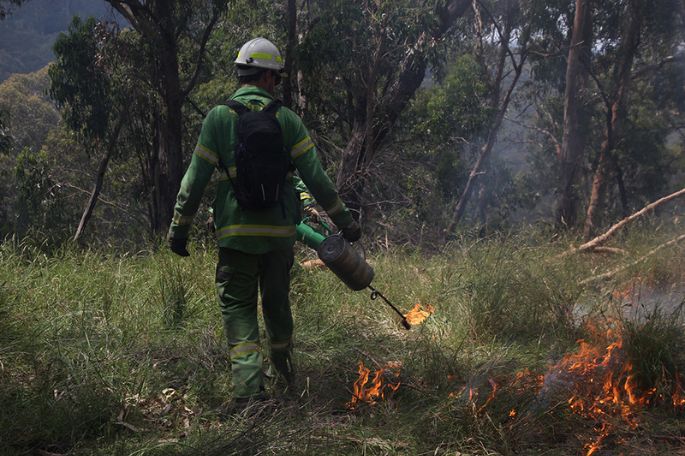Lesson summary
In this lesson, students will use hands-on methods to explore the concept of adapting to, and mitigating risks relating to environmental challenges. Students will begin by viewing a UN video on stopping hazards from becoming disasters. They will then rotate through four STEM building challenges related to floods, storms/cyclones, earthquakes, and landslides/avalanches. The class will analyse the shapes and designs that were most successful and think of ways to avoid or reduce the risk of natural hazards.
The lessons in this unit are designed to inform students about natural hazards in the local environment and ways to reduce risk, prepare, respond and recover from a disaster or emergency.
Learning intentions:
Students will...
- understand that natural hazards do not need to become disasters
- understand that buildings can be designed to resist natural hazards
- understand that there are strategies to avoid natural hazards becoming disasters.
Success criteria:
Students can...
- work in a team to develop plans for solving design challenges
- critique the effectiveness of their designs and implement improvements
- collect results and analyse them
- identify ways humans can avoid, mitigate or adapt to the impacts of natural hazards.
Lesson guides and printables
Curriculum links
Select your curriculum from the options below.
Lesson details
Curriculum mapping
Australian Curriculum content descriptions:
Year 7 Geography:
- Strategies used to enhance the liveability of places, especially for young people, including examples from Australia and Europe (ACHGK047)
Year 8 Geography:
- Management and planning of Australia’s urban future (ACHGK059)
Years 7 & 8 Design and Technologies:
- Investigate the ways in which products, services and environments evolve locally, regionally and globally and how competing factors including social, ethical and sustainability considerations are prioritised in the development of technologies and designed solutions for preferred futures (ACTDEK029)
- Critique needs or opportunities for designing and investigate, analyse and select from a range of materials, components, tools, equipment and processes to develop design ideas (ACTDEP035)
Year 7 & 8 Science:
- Scientific knowledge has changed peoples’ understanding of the world and is refined as new evidence becomes available (ACSHE119, ACSHE134)
- People use science understanding and skills in their occupations and these have influenced the development of practices in areas of human activity (ACSHE121, ACSHE136)
- Collaboratively and individually plan and conduct a range of investigation types, including fieldwork and experiments, ensuring safety and ethical guidelines are followed (ACSIS125, ACSIS140)
- Measure and control variables, select equipment appropriate to the task and collect data with accuracy (ACSIS126, ACSIS141)
Syllabus outcomes: GE4-1, GE4-2, GE4-3, GE4-4, GE4-5, GE4-6, GE5-5, T4.1.1, T4.1.2, T4.1.3, T4.4.1, T4.6.2, SC4-5WS, SC4-6WS, SC4-13ES, SC4-15LW
General capabilities: Literacy, Critical and Creative Thinking
Cross-curriculum priority: Sustainability
Relevant parts of Years 7 & 8 Geography achievement standards:
Students propose action in response to a geographical challenge, taking account of environmental, economic and social factors, and describe the expected effects of their proposal.
Relevant parts of Years 7 & 8 Design and Technologies achievement standards:
Students explain factors that influence the design of products, services and environments to meet present and future needs. Students create designed solutions for each of the prescribed technologies contexts based on an evaluation of needs or opportunities. They independently and safely produce effective designed solutions for the intended purpose.
Relevant parts of Years 7 & 8 Science achievement standards:
Students plan fair experimental methods, identifying variables to be changed and measured. They select equipment that improves fairness and accuracy and describe how they considered safety. Students draw on evidence to support their conclusions.
This lesson is part of the wider unit of work Disaster Resilience Education – Years 7 & 8
Time required: 90 mins
Level of teacher scaffolding: Medium – facilitate class discussion, facilitate activities
Resources required
- Device capable of presenting videos to the class
- Challenge resources for the STEM challenge stations (also see STEM Challenges for station breakdown):
- A large ramp-like object, such as thick cardboard or adjustable whiteboard
- Connector pens – up to 10 per student (optional)
- Marshmallows – full size – several large bags
- Mini marshmallows or raisins – up to 15 per student
- Pedestal fan (or similar) to simulate strong wind speeds
- Pieces of thick cardboard or lasagna sheets
- Playdough – enough for each student to create a figurine
- Scissors – several per station
- Small ping pong or rubber balls (optional)
- Sticky-tape – 100 cm per student
- Straws (paper preferred) – up to 25 per student
- Timers – one per station
- Toothpicks – up to 40 per student
- Tub/s containing a thick layer of jelly – at least one for each earthquake station
- Tub filled with damp sand
- Tub that can hold several litres of water
- Water – several litres in a pouring container
- Watering can
- Wooden skewers or icy-pole sticks – up to 35 per student
- STEM Challenges – one printed copy for each set of stations, single-sided
- Student Worksheets – one copy per student
Skills
This lesson is designed to build students’ competencies in the following skills:
- Creativity
- Critical thinking
- Adaptability
- Initiative
- Problem solving
- Collaboration
Additional info
These lessons were designed in consultation with the Australian Institute for Disaster Resilience.


Welcome back!
Don't have an account yet?
Log in with:
Create your free Cool.org account.
Many of our resources are free, with an option to upgrade to Cool+ for premium content.
Already have an account?
Sign up with:
By signing up you accept Cool.org's Terms and Conditions(Opens in new tab) and Privacy Policy(Opens in new tab).